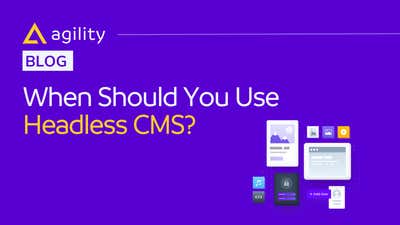Why Dynamic Website Personalization Boosts User Engagement


While keeping your website fresh with new content posted regularly is essential, it's becoming increasingly important to ensure you're providing your audience with exactly what they want.
That's why real-time content customization, or dynamic website personalization, is becoming a huge online trend.
Presenting your audience with targeted and relevant content – every time they visit your site – will allow you to guide each website user more quickly to your site's end goals (whether completing a sales transaction, signing up for a newsletter or lead generation).
Personalized experiences result in visitors sticking around longer and doing more on your website. Econsultancy found that most in-house marketers (94% of those surveyed) agree that dynamic website personalization is vital to success now and heading into the future. On the flip side, 74% of online consumers are often frustrated when presented with content irrelevant to their interests.
What Exactly is Dynamic Website Personalization?
Dynamic website personalization is the automatic and real-time ability to re-architect a website's content for visitors based on a set of criteria determined by practical information. Criteria can be set based on various variables, including interests (based on the content they've viewed on your website), links clicked, location, demographic, referral sources, etc.
How Retail Sites Can Benefit the Most
Dynamically curated sections like "Related Items" or "Shoppers who bought this also bought..." on product pages are easy to get online shoppers to add more to their shopping carts.
Interestingly, a Forrester study found that 90 percent of shoppers that abandon their cart won't return to reclaim it after an hour. However, the shoppers who return to complete their transactions typically spend 55 percent more than those who follow through with transactions without ever leaving the site.
The golden opportunity for retailers to utilize dynamic, personalized content happens between when the shopping cart is abandoned and when the shopper returns to the site. When they return, they can be presented with content tailored to their previous browsing history, influencing their purchasing decisions to achieve that extra 55 percent more money spent.
How to Start
Marketing automation companies like HubSpot and Pardot already have dynamic content platforms that can easily be integrated with most content management systems. They are equipped with the tools and functionality to create customizable visitor experiences based on past behaviours and trends.
Where to Start
It all starts with creating the right content. Map out each persona that makes up your online audience. Then create content for each persona.
For retail sites, you can employ any user data you already have to learn more about your personas. Check out browsing behaviours, purchases and personal data like age and location.
Then you'll be able to find ways to present each persona with targeted content, like placing related items on product pages or product recommendations within blog posts. You can also get creative with driving users to your site through email campaigns and social media, to be pushed through a specific content funnel.
Research, planning, and executing dynamic website personalization may seem like a lot of work. Still, it will breed better user experiences, happier visitors, and – most importantly – better conversion rates.

About the Author
Harmonie is the Senior Marketing Manager at Agility CMS

The 16 Top Personalization Stats for Marketing Professionals

Why Dynamic Website Personalization Boosts User Engagement

When to use Headless CMS
Webinar: How to Scale Your Enterprise Personalization
Why you need a new personalization strategy
Watch Now